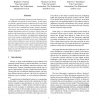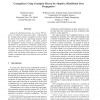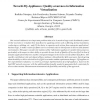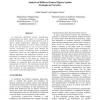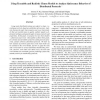ACSAC
2002
IEEE
14 years 4 months ago
2002
IEEE
Large-scale distributed systems present numerous security problems not present in local systems. In this paper we present a general security architecture for a large-scale object-...
ISADS
2003
IEEE
14 years 4 months ago
2003
IEEE
Coordinating the activities of distributed autonomous entities challenges traditional approaches to distributed coordination and calls for new paradigms and supporting middleware....
GRID
2005
Springer
14 years 5 months ago
2005
Springer
— Developing applications for parallel and distributed systems is hard due to their nondeterministic nature; developing debugging tools for such systems and applications is even ...
SIGCOMM
2005
ACM
14 years 5 months ago
2005
ACM
Large-scale distributed systems are hard to deploy, and distributed hash tables (DHTs) are no exception. To lower the barriers facing DHT-based applications, we have created a pub...
NCA
2006
IEEE
14 years 5 months ago
2006
IEEE
Large-scale distributed systems, e.g., Grid or P2P networks, are targets for large-scale attacks. Unfortunately, few existing systems support propagation of alerts during the atta...
NCA
2007
IEEE
14 years 5 months ago
2007
IEEE
Our research addresses two important problems that arise in modern large-scale distributed systems: (1) the necessity to virtualize their data flows by applying actions such as �...
IPPS
2007
IEEE
14 years 5 months ago
2007
IEEE
In large-scale distributed systems, asynchronous communication and future objects are becoming wide spread mechanisms to tolerate high latencies and to improve global performances...
IEEESCC
2007
IEEE
14 years 5 months ago
2007
IEEE
Large-scale distributed systems, such as e-healthcare systems, are difficult to develop due to their complex and decentralized nature. The Service Oriented Architecture facilitat...
SRDS
2008
IEEE
14 years 5 months ago
2008
IEEE
Large-scale distributed systems are subject to churn, i.e., continuous arrival, departure and failure of processes. Analysis of protocols under churn requires one to use churn mod...
ICDCS
2008
IEEE
14 years 6 months ago
2008
IEEE
—Many large-scale distributed systems can benefit from a service that allows them to select among alternative nodes based on their relative network positions. A variety of appro...
